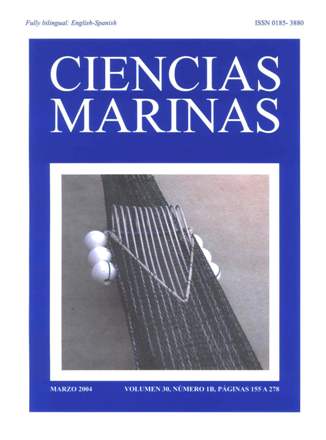Evaluation of oxytetracycline concentration in shrimp postlarval tissues offered through Artemia nauplii and medicated bath
Main Article Content
Abstract
In Mexico, oxytetracycline is commonly applied to shrimp larval rearing systems to control bacterial problems; however, it is not known how much oxytetracycline is incorporated by the shrimp. The present study aimed to measure the levels of oxytetracycline incorporated by Litopenaeus vannamei shrimp postlarvae offered by two different administration routes: bioencapsulated in Artemia franciscana nauplii and applied directly in the seawater. Five treatments were used: postlarvae medicated through conventional bath (20 ppt) and fed Artemia nauplii (BATH), postlarvae fed Artemia nauplii enriched with oxytetracycline (19 mg meal–1) and Rich®, a commercial lipid mix (R-OTC), postlarvae fed Artemia nauplii enriched with oxytetracycline (19 mg meal–1) (OTC), postlarvae fed Artemia nauplii enriched with Rich® (RICH), and postlarvae fed with Artemia nauplii (control). Treatments were applied for seven days and postlarvae from each treatment were sampled daily to measure the levels of oxytetracycline incorporated through high performance liquid chromatography (HPLC). Higher incorporation of oxytetracycline in the shrimp was found in the BATH treatment. Values did not vary much among days within the treatments. Rich® improved the amount of oxytetracycline incorporated by the shrimp. By day 7, the mean antibiotic determinations were as follows: OTC, 5.77 ± 0.6 ∞g g–1; Rich® + OTC, 18.98 ± 2.8 ∞g g–1; and BATH, 26.3 ± 8.1 ∞g g–1 of shrimp extract. An antibiotic dose of 4 times the minimum inhibitory concentration (MIC) is recommended in order to achieve therapeutic doses in the organisms to be treated. The results from the chromatography analysis on the shrimp body showed that only 0.15 of the MIC (303.98 ∞g mL–1) reported was in fact detected in the shrimp in the highest treatment. Oxytetracycline is water-soluble, and perhaps its bioencapsulation for treatment purposes is not feasible. As for the medicated bath, a higher concentration is required to achieve a therapeutic dose in the shrimp tissues.
Downloads
Article Details
This is an open access article distributed under a Creative Commons Attribution 4.0 License, which allows you to share and adapt the work, as long as you give appropriate credit to the original author(s) and the source, provide a link to the Creative Commons license, and indicate if changes were made. Figures, tables and other elements in the article are included in the article’s CC BY 4.0 license, unless otherwise indicated. The journal title is protected by copyrights and not subject to this license. Full license deed can be viewed here.

